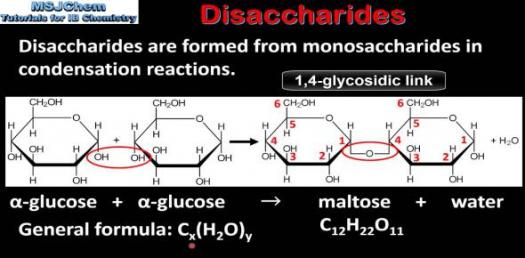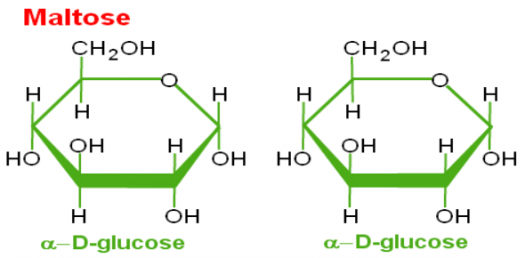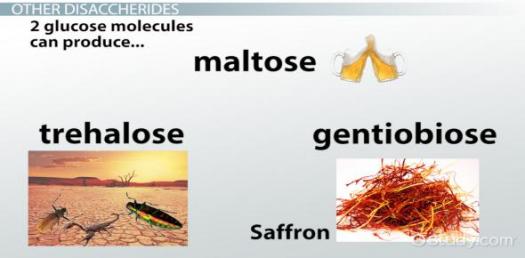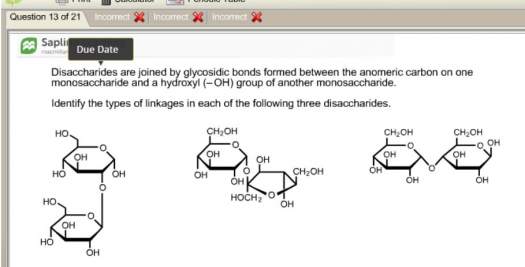Disaccharides MCQ Quiz With Answers
(459).jpg)
What do you know about disaccharides? Can you attempt these disaccharides MCQ quiz questions with answers and score well on this test? Give this disaccharides quiz a try and check your knowledge about these sugars. A disaccharide is the sugar formed when two monosaccharides (simple sugars) are joined together by a bond. What else do you know about these sugars apart from their definition? Let's check it out with the help of the quiz given below. Start the quiz, then.
- 1.
What is another name for a disaccharide?
- A.
Galactose
- B.
Bivose
- C.
Fructose
- D.
Lactose
Correct Answer
B. Bivose -
- 2.
What is the name of the linkage used in joining simple sugars?
- A.
Radiography
- B.
Glycolysis
- C.
Glycosidic
- D.
Debisic
Correct Answer
C. GlycosidicExplanation
Glycosidic linkage is the name of the linkage used in joining simple sugars. This type of linkage occurs when a hydroxyl group of one sugar molecule reacts with the anomeric carbon of another sugar molecule, resulting in the formation of a glycosidic bond. This linkage is important in the formation of disaccharides, oligosaccharides, and polysaccharides, as it allows for the formation of complex carbohydrates. Glycosidic linkages can be found in various biological molecules, such as starch, cellulose, and glycogen.Rate this question:
-
- 3.
Which of these is not a disaccharide?
- A.
Maltose
- B.
Sucrose
- C.
Lactose
- D.
Galactose
Correct Answer
D. GalactoseExplanation
Galactose is not a disaccharide. It is a monosaccharide, specifically a hexose sugar, that is commonly found in dairy products. Disaccharides are formed when two monosaccharides are joined together through a glycosidic bond. Maltose, sucrose, and lactose are all examples of disaccharides. Maltose is made up of two glucose molecules, sucrose is composed of glucose and fructose, and lactose consists of glucose and galactose. Therefore, the correct answer is Galactose.Rate this question:
-
- 4.
What does "Di" in the word disaccharide mean?
- A.
Two
- B.
Sugar
- C.
Three
- D.
Carbon
Correct Answer
A. TwoExplanation
The prefix "di-" in the word disaccharide means "two." A disaccharide is a type of carbohydrate molecule that consists of two sugar units bonded together. The prefix "di-" is commonly used in chemistry to indicate the presence of two identical or similar groups or units in a compound. In the case of disaccharides, it signifies that there are two sugar molecules joined together to form the molecule.Rate this question:
-
- 5.
How many oxygen atoms are there in a disaccharide?
- A.
10
- B.
11
- C.
12
- D.
22
Correct Answer
B. 11Explanation
A disaccharide is a molecule composed of two sugar units. Maltose is composed of two glucose molecules. The molecular formula for glucose is C6H12O6. When two glucose molecules combine to form maltose, the molecular formula becomes C12H22O11, representing the union of the two glucose units. In this case, the number of oxygen atoms involved in the formation of the maltose disaccharide is also 11.Rate this question:
-
- 6.
Which of these reactions favors the joining of simple sugars?
- A.
Sublimation
- B.
Condensation
- C.
Coagulation
- D.
Addition
Correct Answer
B. CondensationExplanation
Condensation is the correct answer because it refers to a chemical reaction in which two molecules combine to form a larger molecule, with the release of a small molecule like water. In the context of simple sugars, condensation reactions occur when two monosaccharides join together to form a disaccharide, such as glucose and fructose combining to form sucrose. This reaction favors the joining of simple sugars because it allows for the formation of more complex carbohydrates, which are important for energy storage and structural support in living organisms.Rate this question:
-
- 7.
Which of these reactions favors the breaking down of a double sugar?
- A.
Hydrogenation
- B.
Hydrolysis
- C.
Subtraction
- D.
Addition
Correct Answer
B. HydrolysisExplanation
Hydrolysis is the correct answer because it is a chemical reaction that involves the breaking down of a compound by adding water. In the case of a double sugar, hydrolysis would break it down into its component monosaccharides. Hydrogenation, on the other hand, involves the addition of hydrogen atoms and does not result in the breaking down of a double sugar. Subtraction and addition are not specific chemical reactions and do not provide a clear explanation for the breaking down of a double sugar.Rate this question:
-
- 8.
Which of these is not an enzyme?
- A.
Sucrose
- B.
Glucose
- C.
Maltase
- D.
Lactase
Correct Answer
B. GlucoseExplanation
Glucose is a simple sugar (monosaccharide) and not an enzyme. Enzymes are proteins that catalyze biochemical reactions in the body. Sucrose, Maltase, and Lactase are all enzymes involved in the breakdown or synthesis of carbohydrates. However, glucose itself is a carbohydrate and serves as a source of energy in the body.Rate this question:
-
- 9.
Which of these is a reducing disaccharide?
- A.
Maltose
- B.
Lactose
- C.
Glucose
- D.
Both A and B
Correct Answer
D. Both A and BExplanation
Both Maltose and Lactose are examples of reducing disaccharides. A reducing disaccharide has one monosaccharide with a free hemiacetal unit that can act as a reducing aldehyde group. In the case of maltose and lactose, one of the monosaccharide units has a free hemiacetal unit, while the other is involved in the glycosidic bond. Glucose and Galactose, on the other hand, are monosaccharides, not disaccharides.Rate this question:
-
- 10.
Which of these is a non-reducing double sugar?
- A.
Sucrose
- B.
Maltose
- C.
Lactose
- D.
Fructose
Correct Answer
A. SucroseExplanation
Sucrose is a non-reducing double sugar because it is composed of two monosaccharides, glucose and fructose, joined together by a glycosidic bond. Unlike reducing sugars, sucrose does not have a free aldehyde or ketone group that can undergo oxidation reactions. Therefore, it does not react with Benedict's reagent or Fehling's solution, which are commonly used to test for reducing sugars.Rate this question:
-
Quiz Review Timeline +
Our quizzes are rigorously reviewed, monitored and continuously updated by our expert board to maintain accuracy, relevance, and timeliness.
-
Current Version
-
Jan 31, 2024Quiz Edited by
ProProfs Editorial Team -
Jan 07, 2019Quiz Created by
Gregorynaomi
 Back to top
Back to top












